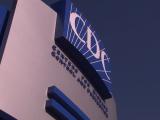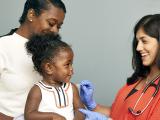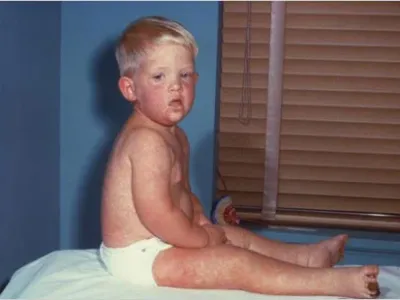Nov 18, 2009 (CIDRAP News) – Federal officials, along with representatives from four vaccine companies, appeared before two US House of Representatives committees today to answer questions about why the nation hasn't stretched scarce pandemic vaccine supply with adjuvants and if a more federally directed distribution system might help vaccine get to more high-risk patients.
Members of the House subcommittees on health and oversight and investigations also grilled health officials and company executives about reasons for vaccine delays and when they first became aware that shipments in October would fall dramatically below summer projections.
They also expressed concerns that the nation will face similar vaccine shortfalls if another emergency strikes unless new technologies such as cell- or DNA-based production systems come online.
In their opening statements, several legislators said they've fielded calls from frustrated constituents who have had a hard time finding the vaccine for themselves or their children. Rep Greg Walden, R-Ore., said, "I don't think finger-pointing exercises are helpful, but there have been some repercussions. Today I hope we can get some concrete answers."
Rep Jane Harman, D-Calif., said the H1N1 pandemic serves as a rehearsal for a major terrorist attack or other national disaster. "Our grades are very mixed," she said of the federal pandemic response. She said health officials did a good job of calmly communicating with the public about the outbreak, but she said some elements of the vaccine distribution have failed.
Addressing delays
Nicole Lurie, MD, assistant secretary for preparedness and response at the US Department of Health and Human Services (HHS) told lawmakers that several factors have contributed to pandemic vaccine delays. Among them were poor production yields from slow-growing seed strains, the nearly simultaneous production of the seasonal flu vaccine, and problems with manufacturer production lines. Early projections of vaccine supply were based on past experiences with the seasonal and H5N1 avian influenza vaccines, she said.
Lurie pointed out that other countries have had similar problems with pandemic vaccine production. "The delays are frustrating to everyone, but the virus is the real enemy, and we need newer, faster, and more reliable production methods," she said.
Starting this week, HHS will start making 2-week dose projections, listing what it expects to get from each of the five manufacturers making pandemic vaccine for the US market.
Rep Bart Stupak, D-Mich., asked why federal officials haven't approved an adjuvanted vaccine, especially because the United States has stockpiled adjuvant and has limited vaccine supplies. He also asked what might trigger a switch to an adjuvanted vaccine.
The United States is one of the only major countries that does not have an adjuvanted version of the pandemic vaccine. Novartis, maker of the M59 adjuvant that the country has stockpiled, announced yesterday that an adjuvanted vaccine could quadruple US vaccine supplies.
Jesse Goodman, MD, acting chief scientist and deputy commissioner for scientific and medical programs with the US Food and Drug Administration (FDA), said the government's senior scientists meet regularly to discuss adjuvant issues. He said tipping points for switching to an adjuvanted vaccine would be if the normal vaccine dose doesn't produce a good immune response or if the virus changes to become more severe.
"We've walked a line, based on science," he said.
Lurie said the nation has never had an adjuvanted seasonal flu vaccine and that adding one to the pandemic vaccine might undermine public confidence in the vaccine, which is already very fragile.
She added, however, that the federal pandemic plan since 2005 has included a strategy for adding adjuvant to the vaccine through an emergency use authorization if the virus turns more severe. Some Americans have voiced worries over Guillian-Barre syndrome, the paralytic condition that ultimately derailed the nationwide swine flu vaccination campaign in 1976. In addition, concerns about thimerosal and autism remain, despite a lack of scientific evidence showing an association.
Goodman told legislators that even if vaccine makers were using newer technologies such as cell-based production, the nation would still face big challenges in ramping up vaccine production in the face of an emerging pandemic virus.
"Even with the most sophisticated technology, you need to manufacture large amounts consistently with high quality. Some of the newer technologies are going to need the same level of care, and we're all working together to accelerate that," he said.
Vagaries of vaccine production
Executives from three of the four vaccine manufacturers that testified—Novartis, Sanofi, and CSL Biotherapies, Inc.—all attributed delays to the initial seed strain, which produced a third to a half of the yield typically seen with the seasonal flu vaccine.
Paul Perreault, president of CSL said a greater assortment of seed lots earlier during vaccine production may have avoided the 10-week gap it took to identify a vaccine strain that grew more vigorously. CSL has a contract to make 36 million doses for the US market, he said, adding that the agreement acknowledged the company's obligation to make the vaccine first for Australia, where the company is based.
Ben Machielse, executive vice president of operations for MedImmune, manufacturer of the nasal-spray vaccine, said making its own seed strain through reverse genetic techniques helped accelerate the process. MedImmune was the first company to deliver vaccine to the federal government,.
He said the company has finished making all 42 million bulk doses and has shipped 13.2 million so far. The company has submitted a request to deliver the excess bulk vaccine in an alternate delivery device, because the supply of inhaler canisters is not meeting demand.
Novartis has shipped more than 18 million doses to the US government so far and is on track to meets its commitment, said Vas Narasimhan, president of Novartis' US vaccine division. He said moving toward more modern production methods could streamline vaccine production in the future. (Novartis will open a cell-based vaccine plant in North Carolina on Nov 24.) He also said new testing methods for lot release could help speed production.
Sanofi, the only vaccine maker on US soil, expects to deliver 75.3 million doses by the end of the year, of which half have already been shipped, said Phillip Hosbach, the company's vice president for immunization policy and government relations. He said though companies understand the public's frustrations about shortages, producing the seasonal and pandemic vaccine simultaneously has been a notable accomplishment.
Good marks from TFAH
The government's handling of the pandemic vaccine got relatively high marks during today's hearing from Jeffrey Levi, PhD, executive director of Trust for America's Health, a health advocacy nonprofit group based in Washington, DC. He said vaccine developments moved forward with remarkable speed and the vaccine is a good match with the circulating strain.
"Whatever our concerns with production capacity are today, had the federal government not made the multi-billion-dollar investment in enhanced vaccine production capacity since 2005, we would be in far worse shape," he said. "We are depending on an inherently unpredictable technology and we are, unfortunately, still a few years away from US approval of newer, more reliable technology."
The federal government has been transparent about the vaccine and has made appropriate adjustments when supply issues have come up, Levi said. "While I cannot speak to when senior administration officials should have known about serious supply problems, when they did become aware of them, they adjusted policy and messaging appropriately," Levi said.
Though some of their responses have led to confusion and frustration, "it has reflected an honest attempt to reflect the current state of knowledge," he said.
Tackling distribution
Lawmakers aired worries about priority-group access to vaccines and said they were concerned about media reports that implied Wall Street executives and terror detainees might be getting doses before high-risk patients. Some wondered if a more centralized federal role in delivering vaccine to providers might better direct vaccine to priority groups.
Anne Schuchat, MD, director of the Centers for Disease Control and Prevention's National Center for Immunization and Respiratory Diseases, said health officials still believe states, because they know their populations better, are in best position to put vaccine in the path of high-risk people.
David Lakey, MD, commissioner of the Texas Department of State Health Services, told the committee that Texas is directing much of its vaccine to healthcare providers, believing they are in the best position to reach priority groups. Many of the state's school districts are planning vaccine campaigns, and some pharmacies will be able to administer the vaccine, he said.
The challenges health departments are facing have been exacerbated by setting vaccine supply expectations too high, he said. Also, he said the federal allocation, ordering, and shipping system sometimes gives the impression that states are not getting their allotments.
Lakey added that an underfunded public health infrastructure over the past several years has added to the difficulties. "One-time funding has been difficult, but we appreciate what we've had," he said.
See also:
US House of Representatives subcommittee H1N1 vaccine hearing background materials




















